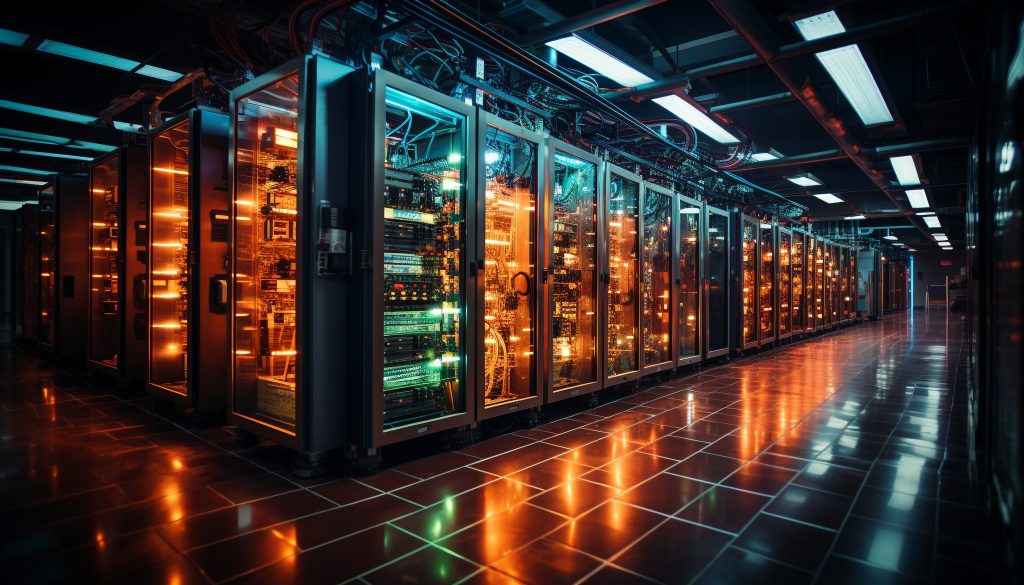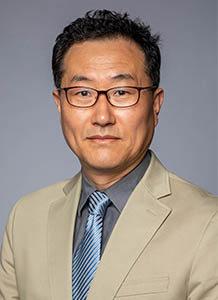February 07, 2024

The demand for artificial intelligence is rising, which is putting energy strains on the data centers that power the technology. And that massive computational activity generates a tremendous amount of heat—so much so that cooling systems account for up to 40% of the energy used in data centers. That’s the equivalent of powering some 32,000 households.
Now, a Mizzou Engineering researcher is devising a system to cool data centers down more efficiently and effectively. Chanwoo Park is leading a project funded by the U.S. Department of Energy’s Advanced Research Projects Agency-Energy (ARPA-E) in collaboration with the National Renewable Energy Lab. It’s part of a $40 million endeavor called COOLERCHIPS, which stands for Cooling Operations Optimized for Leaps in Energy, Reliability and Carbon Hyperefficiency for Information and Processing Systems.

Park—an associate professor of mechanical and aerospace engineering—is the Principal Investigator of a $1.6 million project to develop a hybrid two-phase loop to serve as a cooling solution for data centers.
“I’m proud of this because we’ve been developing our technology over many years,” Park said. “This ARPA award gives us a lot of resources to solve the problem and allows us to work with the national lab and industry.”
Traditionally, data centers have been cooled using air-moving fans or by flowing liquid to move heat away from the racks that hold computer processors. Both processes are problematic in that they suck up enormous amounts of energy and water resources.
Park’s method is unique for a couple of reasons. First, it has both an active and passive mode, meaning the cooling system can run either passively or actively depending on cooling requirements.
“If a computer is idling, the cooling demand is minimal, and in that case, the system goes into passive mode,” he said. “We don’t use active components like pumps so there’s no energy consumption. When a computer turns on and is running harder, requiring more cooling, it switches to active mode, turning on the pump. This is like modern cars—when you stop at a light, the engine stops so there’s no fuel consumption. When you accelerate again, the engine automatically turns back on.”
The hybrid design integrates capillary pumping with mechanical pumping. Within the evaporator, the capillary structure generates thin liquid layers capable of evaporating to efficiently dissipate heat from server chips with minimal thermal resistance. Simultaneously, mechanical pumping enhances cooling capacity by efficiently absorbing a substantial amount of heat.
“Using this hybrid design, we are creating an ideal cooling solution for data center cooling,” Park said. “It’s very difficult, and it requires a lot of analysis and a lot of fabrication. It involves advanced manufacturing techniques, but it is designed to handle high flux and can scale up to very large systems with low power consumption. It’s very close to the ideal cooling system we’re looking for.”
Park is five months into the three-year project. Ultimately, the goal is to find a system that can be commercialized and mass-produced for use in high-end data centers. He’s optimistic that the partnership with government and industry will result in large-scale commercialization.
“Thanks to collaboration with national labs and industry partners, we’re making significant strides,” Park emphasized, highlighting the successful achievement of initial milestones. “Ultimately, I’m optimistic that this cooling system will be adopted by data centers to enhance overall efficiency.”
Learn more about COOLERCHIPS projects here.
Energy Innovation Center
Through the Energy Innovation Center, the University of Missouri is committed to tackling challenges presented through rising energy concerns and rapid growth in artificial intelligence and how the two work together to optimize energy production, transmission and grid security. The $160 million, 180,000-square-foot facility, which is expected to open by 2027, will bring together engineers, agronomists, physicists, chemists and public policy experts to provide sustainable solutions for the future and strengthen domestic energy supply. Levels of the new center will be dedicated to nuclear energy and nuclear-engineered materials; hydrogen and renewables; energy storage; and grid security, resilience and innovation alongside public policy. EIC joins a growing tradition at Mizzou — similar to the NextGen Precision Health initiative — of bringing experts in different disciplines together for collaborative innovation. The College of Engineering, the College of Agriculture, Food and Natural Resources, and the College of Arts and Science stand together at the convergence of their faculty and research expertise with the Energy Innovation Center.